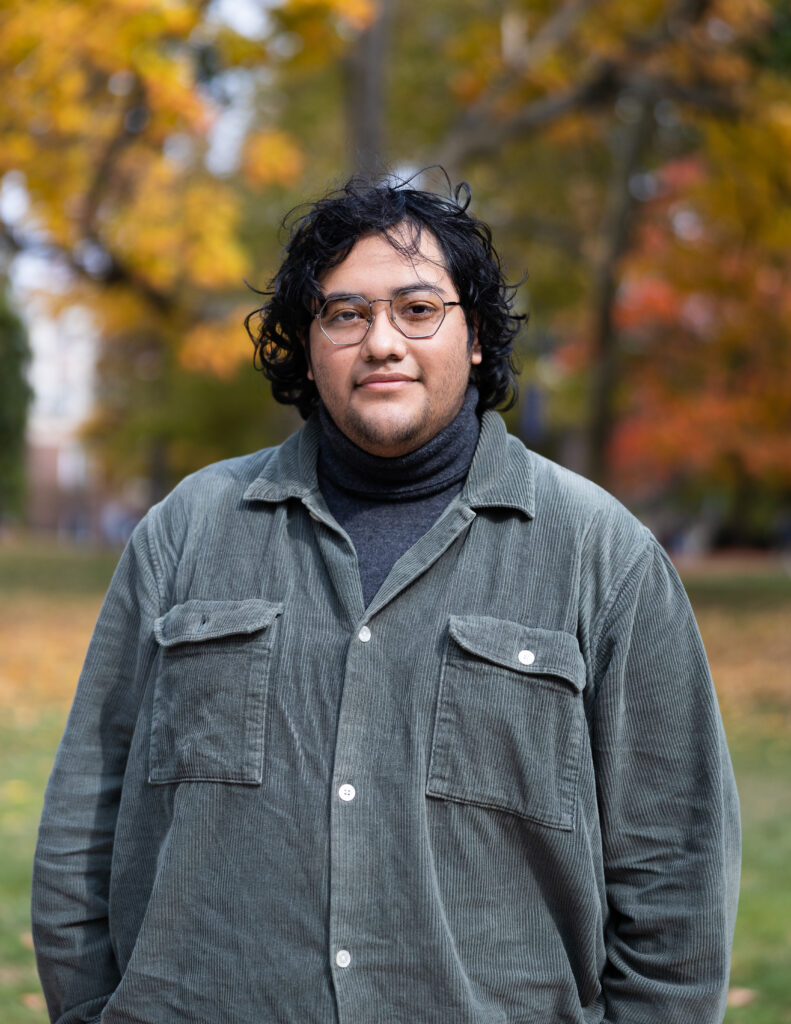Opinion: Race on Campus
By Isaias Martinez, President of LASA

Isaias Martinez ’23 (Photo Eric Lippe/The Gettysburgian)
Why is it that we stray from talking about race on campus?
Gettysburg College is a PWI, predominantly white institution, already not a welcoming place for people of marginalized racial groups. However, once you integrate yourself into the campus community, the intricacies of your identity put into perspective the idea of race on campus.
My name is Isaias Martinez, and I have many identities, but being Latinx has been the one the college hasn’t let me forget. I acknowledge my position as a senior and the President of the Latin American Student Association to say that my experience can not generalize the experience of others on campus when we talk about race.
Race on campus at the forefront is a story of marginalized versus white. The reality is that most spaces on campus have done little to change how they address the ever-growing demographic of students. Whether it would be in classes, working with one of the college offices, or just participating in the social atmosphere, not much has changed. We think things have changed because many of the marginalized have gone on to inhabit those spaces and have become more vocal about our existence on campus, just like I am doing here. Between performative efforts by all at the college and the continued exhaustion of the marginalized educating the non-marginalized, when are we actually start discussing the issue of race on this campus?
There are various spaces where these conversations can be had. Take eRace, for example, a dialogue group for which I help plan the meetings, where we invite everyone on campus to talk about different topics relating to race. Attendance has been low, which speaks to the bigger problem relating to the culture we are trying to curate on campus. If dialogue does not work, what can we do? Rely on the marginalized to solely change the issues? I think not.
While we cover the broader problem of marginalized vs. non-marginalized, the problems between racial groups can not be ignored. While we as the marginalized should uplift each other, the opposite is often done. As the leader of the Latin American Students’ Association (LASA,) I now see how divided we are as cultural affinity groups. I do not really know anyone on anyone’s Executive Boards, I did not really know my Executive Board when we got elected, and when the current Chief Diversity Officer asked for names of Executive Board Members for Asian Student Clubs, I could not think of anyone. As segregated as we might be between marginalized and non-marginalized, there is still a divide between the marginalized students on campus.
So now that the issues have been put out in the air, we have to analyze what the college has done to mitigate this. We have the Office of Multicultural Engagement (OME,) which works for individual groups of students but has not felt like a place to unify all multicultural groups on campus. The college has tried to improve diversity between faculty, staff, and students, but what does that do if they cannot keep this diversity at the college?
There is a lot of work to do at the college when it comes to race on campus. I do not know how long we, as the student body, can keep blaming what we call the ‘administration’ when we can not unify as marginalized communities. Of course, there is blame on the college to aid in these endeavors, but we cannot wait for them to do something, because we will be waiting a long time before anything happens. Finally, remember that as an individual, you, unfortunately, cannot cause change in the institution.
This article originally appeared on page 9 of the October 2022 edition of The Gettysburgian’s magazine.
